COVIDic Hodophobia ➬ Toward Traveler ReMotion.
VAMIFESTwo.
Your Recovery Vehicle.
Prelude: VAX Proof vs. VAX-Proof.
Update: 5/7/21—The COVID-19 vaccination debate is growing more salient by the hour, spreading virally into the means of injection certification. Questions, issues abound: Who decides? Who declines? Mandatory or voluntary? Public or private sector? National or state/local—red state or blue?
VAXess or VAXless?
To date, one in three recently surveyed Americans say they are unsure about getting jabbed, let alone carrying some sort of vaccination ‘passport’; or they’re refusing COVID shots altogether. Meanwhile US public health messaging has become increasingly muddled and politically charged, pitting social/personal responsibility against individual liberty, privacy and equity.
The Centers for Disease Control’s pandemic warnings and campaigns of mass inoculation sites still face pockets of anti-VAX resistance, left and right. Texas and Utah now join Florida in prohibiting vaccination certificates/passports of any form. The Sunshine State has since doubled down on its ban, with the cruise ship industry threatening to bail from its ports of call. Meanwhile the authenticity of CDC COVID-19 Vaccination Record Cards issued thus far is already under attack by profiteering forgers. All this, as new COVID variants (e.g., B117) are surging across Europe and the USA.
So Vamigré will monitor the state of the VAX-in-nation, and VAXtrax worldwide, arm in arm with VAXpass/VAXport developments—hard copy and digital, traditional passport to smartphone. We’ll navigate the yeas and nays, as well—however and wherever the VAXways may lead…
Card-Carrying Certainty, Reimagined.
Update: 4/2/21–Or call it the next better thing: For what the COVID-19 pandemic has torn asunder travel-wise, emerging technologies are promising to restore. One hopeful sign, for example, is New York State’s recent introduction of a digital passport, namely the Excelsior Pass, negative testing (within the past three days) and vaccine authentication to be accessed and presented via smart device barcodes and QR codes.
If so, none too soon. Because amid raging COVID variants and vaccine distribution bottlenecks, the US has lost $510b in travel spending to date, effecting 35% of pandemic-related job losses, as health officials continue to warn against non-essential travel.
Carriers, destinations, hospitality, restaurants and bars have all seen revenue streams evaporate, with industry analysts projecting little significant rebounding before 2022. Airlines and their unions foresee 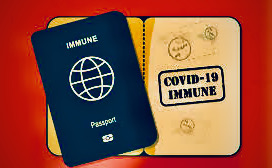 even more financial damage and bankruptcies, what with federal payroll support scheduled to expire by March 1. United Airlines and American Air already threaten to layoff or furlough tens of thousands of employees unless Congress comes through with some $15b of payroll assistance lasting through September.
even more financial damage and bankruptcies, what with federal payroll support scheduled to expire by March 1. United Airlines and American Air already threaten to layoff or furlough tens of thousands of employees unless Congress comes through with some $15b of payroll assistance lasting through September.
Incoming Transportation Secretary Peter Buttigieg has expressed “lots of concern…to do and get it right” with inclusion of such airline aid in President Joe Biden’s $1.9t COVID relief plan—despite lagging Congressional support. At the same time, further grounding airline industry efforts, the feds consider requiring negative COVID-19 test results before boarding domestic flights—already mandated for international flights by the Centers for Disease Control.
In fact, beginning January 20, DHS/TSA ordered that all people (US citizens and non-citizens) seeking to fly to the United States present certified negative COVID-19 test results from within three days of boarding. Now further testing and certification could be ordered to stem coronavirus and UK/South African variant spread, while the CDC continues to recommend that non-essential travel be curbed altogether—determinations said to be guided by data, medicine and science.
Still, in the face of existing state/international travel bans; chaotic, hourslong border testing queues, and lengthy 7-14 day quarantines, some healthy virus-free travelers, already braving these arbitrary barriers to entry, are reportedly being gouged by certain ‘designated’ (and sometimes substandard) ‘quarantine quarters’ hotels and other such lodging.
VAXpass: Card-Carrying Complexities.
Into this maelstrom of viral void and avoidance comes news of technological advances in the form of digital credentials.
Already in play are the The Commons Project’s Common Passes including a QR code. The US also presently recognizes Rapid Antigen test results and Polymerase Chain Reaction (P.C.R./nasal swab) tests required by other countries. Problem is, virus variants and vaccines constitute volatile moving targets.
Hence we see the urgent development of digital testing and inoculation documentation that can be accepted nation-and-worldwide. Namely vaccine passports—presented as 21st Century successor to a long standing yellow card (le carte jaune), the World Health Organization’s International Certificate of Vaccination. Such digital certification would verify negative COVID-19 test results and approved vaccinations (whether by one injection or two).
Alternately the International Air Travel Association is developing a Travel Pass, already deemed acceptable to Emirates/Etihad Airways—mobile check-in via a smartphone app and/or other secured 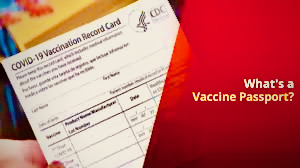 documentation standard that will be recognized the world over. The IATA pass is due out in March—its availability to be dependent upon a nation’s testing and vaccine distribution. IBM is employing its block-chain technology to implement a Digital Health Pass that may contain COVID test results, inoculation records, temperature checks and virus exposure notices. ICC AOKpass and VeriFLY applications are also in current development as a means of overriding dox mishmash.
documentation standard that will be recognized the world over. The IATA pass is due out in March—its availability to be dependent upon a nation’s testing and vaccine distribution. IBM is employing its block-chain technology to implement a Digital Health Pass that may contain COVID test results, inoculation records, temperature checks and virus exposure notices. ICC AOKpass and VeriFLY applications are also in current development as a means of overriding dox mishmash.
Furthermore, albeit with limited evidence of the coronavirus being transmitted through surface contact, touchless technologies in terminals, loading/baggage areas and onboard aircraft aim to assuage public/ passenger fears, in concert with continued masking, hand-washing and social distancing. Airlines are confident these technologies can help safely re-start travel by easing the friction and headaches of long, slow terminal lines—perhaps cutting check-in, boarding gate space and times by some 50%.
Nevertheless, privacy advocates warn that convenience and confidence building measures for speedier boarding can lead to a “function creep” of authentication infringing private rights. Accordingly, any such technology must be open source and accessible, beyond government or company control. Targeted are biometrics operations in Frankfurt and Munich, Germany airports that confirm facial imagery matches a traveler’s identification documents, with Denmark’s facial recognition measures already leading the EU way.
But the Star Alliance airline trade group contends that ‘no personal information remains in (proprietary) facial recognition systems.’ That claim remains to be evidenced over time, as will the resolution of troubling issues regarding traveler equity—Florida, for one, having already banned any such vaccination passports (VAXpass, VAXport, etc.). So we’ll see how universally verifiable and inviolable these various digital approaches prove to be.
Card-Carrying Catharsis?
In any case, the long tail of security technology is likely to continue and expand far beyond any projected travel turnaround by 2022. Nearer term, leisure travel’s revival may be gradual, but will be steady and sure, with bargains here, there, everywhere—a stricken travel/tourism sector meeting pent-up demand amid coronavirus variants and vaccine distribution snafus.
And the T/T industry is galvanizing with the “value of…telling their individual stories.” Because everybody loves to travel, and will come back bigger and better, cleaner and duly cognizant of the vital issues this trying pandemic period has raised. Reason why Vamigré is dedicated to hastening that rebound by diligently pointing the way. (MTC…)![]()
March 30, 2021
Course correction: Now then, the COVIDamage is done, hodophobic restrictions/anxiety having set in, and will continue to be done for quite some time to come (Hodophobia being an intense-to-irrational fear of travel). And that is despite the widening proliferation of effective anti-viral vaccinations worldwide.
Question is, what do we intrepid Vamigrés do, where do we go from here? How about up and out there again, realistically primed and prepared in this rave, yet grave new world? We’ll go first and foremost by packing where we’ve been before into where we are today. Then by traveling wise-eyed, not just wide-eyed in pursuit of travel equity—keen on what may be lying for us down the runway and road. So, what pray tell will we be finding out there?
The Road More Travelled…
Update: Cure-All For CDC Jet Lag?
March 12, 2021–As the US Centers for Disease Control eases up on COVID-19 restrictions, it continues to red flag travel. Restaurants, theaters, events, gyms, and a wide variety of small businesses can open up, albeit with continued anti-pandemic limitations, now that vaccinations are becoming increasingly available. But the CDC insists that travel, particularly air travel, remains too statistically suspect as a viral ‘super spreader’, despite airlines’ best efforts to sanitize the onboard, in-cabin flight experience—thereby leaving travel lagging behind the wellness curve.
Mist and Mask.
For already beleaguered carriers have been dutifully installing state-of-the-art cabin ventilation, adhering to deep cleaning and (spray/fog) disinfection protocols, while maintaining mask requirements and safe distance seating. Seriously folks: Witness the recent JetBlue/FAA clampdown on a boozing, unruly passenger who refused to continue masking up on a JFK-Dominican Republic flight, the agency fining him $14,000. This, in the face of airline load factors still down nearly 50% from 2019, with industry analysts seeing no true travel recovery until 2023/24.
Clearly the latest Biden/Congressional Pandemic Relief Bill, (allotting $15b to domestic airlines, $9b to airports and ancillary services), affords an added lifeline, buys airlines some crucial time. The third in a series of federal assistance packages—following March 2020’s $50b in payroll grants and loans, with 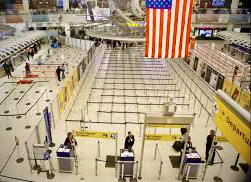 December’s $15b more in payroll funding—will temporarily protect tens of thousands of aviation jobs, at least through September 2021. Indeed, United and American Air have just cancelled 27,000 furlough WARNings issued absent more relief legislation. (Yet whether these majors actually need all this government largess is under scrutiny—another story entirely).
December’s $15b more in payroll funding—will temporarily protect tens of thousands of aviation jobs, at least through September 2021. Indeed, United and American Air have just cancelled 27,000 furlough WARNings issued absent more relief legislation. (Yet whether these majors actually need all this government largess is under scrutiny—another story entirely).
May 10, 2021—At the same time, these and far too many other carriers (10 US at least) have been sitting on billions of travelers’ dollars in pre-paid tickets/fares for future flights we’ve since been unable to take due to COVID pandemic restrictions. Rather than providing a cash refund for airline prompted flight changes/cancellations (as per federal guidelines), carriers have been pushing travelers toward credits—more often than not with expiration dates attached.
At worst, travelers are now pressured to fly before feeling safe and comfortable to do so, lest we lose our credits/vouchers altogether. So would-be passengers have filed over 95,000 complaints to the Department of Transportation over these complicated, fine print airline refund/flight credit policies. For their part, the carriers claim they have already paid out millions in ticket refunds during the schedule ravaged pandemic; some like American and United have extended expiration dates into 2022.
Still, the DOT has issued a carrier-wide enforcement notice regarding refund rules, while Senators Ed Markey and Richard Blumenthal have sent airlines a letter demanding they commit to refunding travelers’ pre-pays for cancelled flights, or at least removing expiration dates on some $12b to $15b in flight credits. We’ll surely follow the money on this fare/unfair dispute going forward.
For The Longer Haul? Let It Fly…
Nevertheless, Wall Street predicts a slower air travel recovery in Q1-2, not picking up significantly until Q3-4 2021 at the earliest. At the same time, COVID vaxing proliferates, and hospitalization/death rates decline—with consumer surveys finding widespread pent-up demand for travel, some 65% of respondents feeling ‘vacation deprived’.
So maybe it’s high time for the CDC to reconsider spreading its current jet-lag policy, which is rather more smothering, than ameliorating safe, sure ‘traveler comfort’—before its purely clinical remedy perfectly grounds any prospects for a cure. Lest more and more cabin-fevered travelers wash their hands of the agency’s data-thumping, fearleading COVIDirectives and storm the boarding gates. That is, provided the major carriers can keep their computerized reservations/ticketing systems up and running. (MTC…)
![]()
…Oh, it may be slower, shorter going at the outset—COVID-19’s menace and manifestations are seeing to that. Indeed, traveling safe and data sure is in the prevailing cautionary winds these days, distancing near and not too far (up to six hours from home, recommend CDC and most public health agency guidelines).
Recent surveys find that one-third of polled Americans would not consider resuming their travels for at 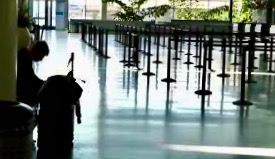 least three months after current coronavirus restrictions end. Those who are venturing forth seem to do so with uncertainty, if not fears as to security, convenience and disease transmission. Couple that hyper-caution with today’s lower PPG for gasoline, and witness the launching of a gazillion little road trips. Keeping it low-risk, keeping it local: parks are a natural choice for those of us seeking to avoid overcrowded, potentially virus-circulating destinations.
least three months after current coronavirus restrictions end. Those who are venturing forth seem to do so with uncertainty, if not fears as to security, convenience and disease transmission. Couple that hyper-caution with today’s lower PPG for gasoline, and witness the launching of a gazillion little road trips. Keeping it low-risk, keeping it local: parks are a natural choice for those of us seeking to avoid overcrowded, potentially virus-circulating destinations.
But hey, wait a minute—what on earth are we doing here anyway?
Safe, but Sorry?
The overriding pandemic prescription: re-enter places warily, deliberately, with a face-masked nod toward proper social distancing. Wide-open outdoor spaces, a common sense approach all right,(said to reduce COVID transmission 18-19 times normal) in lieu of last year’s overtourism. Yep, road trips—going on our own in our own vehicles and tricked-out RVs, at our own careful personal and family paces while stopping solely at certified sanitized food sources and wipe-bombed ho/motels. 
But these so-called ‘safecations’ still face such precarious roadblocks as COVID-19 hot spots, checkpoints and 14-day state-by-state, nation-by-nation quarantines. Not to mention auto breakdowns, rocky road infrastructure and climate-changing weather extremes—much less future re-mandated start-and-stop lockdowns.
Moreover national parks, from Acadia west to Yellowstone and Olympic are opening only with tight restrictions—from 50% capacity to admittance primarily through quotaed day-use passes doled out online—with firm maintenance of six-foot spacing in lodging (+cabins, campgrounds, etc.) and concessions. Which is fine and dandy. But lesser known, smaller state, regional and local parks may be the real finds going forward. Because states and sites that have suffered 50-80% drops in T/T spending of late, ‘dispersed visitation’ could not be more welcome about now, particularly given an NPS survey that finds one-half of 2019 visits to all national parks were to just 27 of its facilities.
Meanwhile various attractions such as (historic) sites and scenic sights, zoos, museums, themers, etc. are reopening on a limited basis, in differing stages. Some of the best are local mom-and-pops only a short drive away, and are safer, smarter alternatives to the beach and mountain mob scenes (in Arizona, Texas, Florida, etc.) that may dish out second helpings of coronavirus disease. but are not free of political controversy (over masks to monuments), revision and outright vandalism. Nevertheless one prudent baby step beyond a holed-up staycation may well be the redux of those 1950s-era road trips.
Trouble is, pathologically clean, hermetically sealed, nearer-is-dearer stuff will only get us so far. Especially if sanitized comes to mean just plain sterilized—and certain self-serving Cassandral ‘modeling’—wipes the fortuitous life out of everything in sight. Therefore venture out further we will, ever mindful of our climatological and environmental impact—on issues of ecology, sustainability, habitat and endangerment—accepting responsibility, but not shouldering all the blame.
Which is why independent credible, reliable, timely and lively travel consumer information is by all means vital today, to get and keep us going the Vamigre way…
Airing it Out.
More broadly, let’s acknowledge that the travel industry overall has been COVIDecimated, high and low. Worldwide, rail systems such as Amtrak have seen an 80-90% drop in ridership. Cruise ships, now labeled ‘cruise crypts’, have been cast adrift and are sinking fast. The food and lodging sectors are only beginning to reset from shutdown mode, if not last-resort struggling for survival. But most brutally hammered are the commercial airlines. Let’s face it, the world’s air carriers are currently hanging on by a wing and a CARES package, the sector losing well over $80b in 2020 overall.
Update: Even with $40b in Federal grants, tens of billions in low-cost government loans, Congressional approval of another $14b to pay workers through this fall, major U.S. lines (American, Delta, Southwest and United) lost over $31b in 2020, the industry overall continuing to lose over $150m per day.
Merely a year ago, the airline industry had been thriving, flying nearly 85-90% capacity, propping up low base fares by ladling on fees for checked baggage, preferred (e.g., family) seating—even water bottles and anything else they could monetize. This, while cramming more and more cramped seats into its cattle-car coach cabins. Flying high, all right—then landed the coronavirus…
Since, passenger traffic has plummeted nearly 95% versus 2019. Airline fleets have been grounded in the 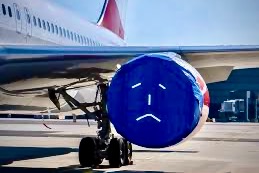 downdraft, some 100 million travel sector jobs lost globally. Airlines are losing $10b per month by operating nearly empty flights; airport terminals are largely deserted, with businesses and concessions all but shuttered. Hotels (+ motels, BnBers), whose disinfecting/sanitizing hygiene procedures will be factored in coming dispatches, are also desperate to regain public confidence and support. Then there’s the scuppered cruise ship industry, which has become a beachball in Florida’s politics, local officials battling the CDC over whether to sail or not to sail before spring, 2021, citing sinking ships and overall tourism woes.
downdraft, some 100 million travel sector jobs lost globally. Airlines are losing $10b per month by operating nearly empty flights; airport terminals are largely deserted, with businesses and concessions all but shuttered. Hotels (+ motels, BnBers), whose disinfecting/sanitizing hygiene procedures will be factored in coming dispatches, are also desperate to regain public confidence and support. Then there’s the scuppered cruise ship industry, which has become a beachball in Florida’s politics, local officials battling the CDC over whether to sail or not to sail before spring, 2021, citing sinking ships and overall tourism woes.
But firstly, domestic U.S. carriers, deemed ‘essential air highways’, accept all those government grants and loans with stimulus mandates that include maintaining unprofitable routes to smaller, outlying destinations, and providing payroll protection support that prevents the furloughing/firing of up to 90% of airline workers through September 30. The governmental bailout also goes toward care and cleansing of aircraft and ground facilities—with the ultimate goal of forestalling carrier bankruptcies, which would likely spur further industry consolidation.
After the fat flying of recent years, which saw airlines paying out hefty dividends and inflating their market values by pouring gaudy revenues into stock buybacks and fortress balance sheets, carrier executives are now taking deep compensation haircuts. With much of their fleets grounded, schedules slashed up to 90%, failures or mergers on the horizon, airlines domestic and overseas are desperately scrambling to make it through the summer CARES months—with Moody’s Underwriters already plunging UAL into junk-bond depths, while Delta slashes its summer flight schedule amid mounting losses; A/A and Jet Blue join operating forces (routes, scheduling, etc.) for survival. By now, the airline industry claims that, without further federal subsidies, it is facing total collapse.
Update: And since Congress and the failing Trump administration were unable to reach a compromise on CARES II federal funding—executive order workarounds and national security concerns be damned—the threatened airline industry layoffs have begun. Travel having plunged 95% in April 2019, peak summer season down dismally from ’19 levels (airport screening down 70%), United and American Airlines have announced the furloughing of some 32,000 workers. Otherwise, voluntary pay cuts, unpaid leave, buyouts and early retirement packages are in the offing.
But with over $5B in Treasury Department loans coming due, and travel demand stalled, they, as well as Delta and Southwest (both avoiding layoffs thus far) still face a stormy next several months, to say the least. So carriers scrimp and trim, grounding older, less efficient aircraft, reworking contracts, continuing to deal workers buy-outs or early retirement. Still, they can’t fill flights with enough passengers at high enough fares to break even on them.
Surveying the Skyscape.
More broadly, a recent survey by the International Air Travel Association (IATA) finds that 60% of travelers would wait two months before booking overseas flights; 40% would hold off at least six months—which bespeaks significantly less international journeys. Reason enough why the German government has just taken a 20% stake in Lufthansa via a bailout, France tosses a $1b lifeline to Air France (minus job guarantees), while even plush Emirates Air has grounded many planes, let alone the likes of low-costers Spirit and Allegiant.
It appears nations will be conducting staggered reopenings, country by country, before the world comes back in full. This confusing hodgepodge will prolong the visitation process, as will increased 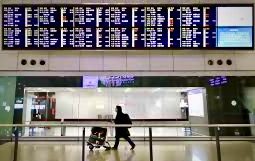 documentation and health check requirements. Indeed, Great Britain has already established 14-day quarantines for incomers from nations posting higher corona case numbers than its own. For that matter, US-China flights are grounded entirely amid reciprocal geopolitical spats over where/how this virus crossed over in the first place.
documentation and health check requirements. Indeed, Great Britain has already established 14-day quarantines for incomers from nations posting higher corona case numbers than its own. For that matter, US-China flights are grounded entirely amid reciprocal geopolitical spats over where/how this virus crossed over in the first place.
Stateside, New York, New Jersey and Connecticut have just required such quarantines for states (currently nine and growing) that are deemed COVID hot spots with upwards of 10% infected case rates. Hawaii, for one is bolstering its inbound temperature taking, thermal screening, leading to facial recognition/capture and resulting 14-day quarantines for COVID-indicated visitors; Chicago has just slapped 14-day quarantines on any visitors from neighboring Indiana. Moreover, Illinois’ Windy City has since extended its two-week quarantine policy to cover travelers/visitors from 30 other states (Alabama to Wyoming) and territories (Puerto Rico, etc.) that have reported an average of 15 new COVID-19 cases over a given seven-day period. It’ll take broad shoulders indeed to enforce that. So it remains to be seen whether such lock in/out measures actually bring the Himilayas, Belizes and Venices of the world back into travelers’ dreams and onto our hi-def digital viewing screens.
Spring Saling Away.
Hence what’s this 2/3rds drop in air travel to us? Most immediately, fare (fire) sales, as with SWA’s current dirt-cheap one-way tickets. Carriers are eager to fly whoever they can whenever and wherever they can, stimulating demand as best they are able—gaining bookings, solidifying certain markets to better position themselves for travel’s incremental revival (hoping for up to 80% of 2019 levels by mid summer 2021?).
And most immediately, even more springtime fare sales—that’s what. Because planes flying at 20-60% capacity leave plenty of room for bargain basement price elasticity, which Vamigre will explore/exploit more thoroughly in days to come. Along with cruise line offerings, although behemoths carrying 250+ passengers are still being banned from US ports.
Moreover, air carriers are more or less attempting to sweeten their enticements by doubling down on deep electrostatic cleaning of their planes between flights, cloud sanitizing seats, armrests, screens, tray tables, flooring and overhead bins. PPE crews are disinfecting galleys and lavs (with questionable chemicals?), while allegedly replacing filters 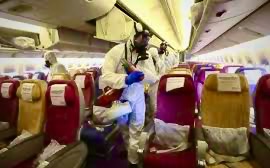 regularly to freshen cabin air circulation. Some airlines are even deploying high-efficiency particulate air filters (HEPA) used in modern air conditioning systems specifically to catch microbes and viruses.
regularly to freshen cabin air circulation. Some airlines are even deploying high-efficiency particulate air filters (HEPA) used in modern air conditioning systems specifically to catch microbes and viruses.
Then there is the hotly debated reversing/blocking off of middle seats (as Delta continues to do), presumably to better allow for safer passenger distancing—or using robots to load carry-ons to lessen cabin bin wars. As to pre-flight, we hear that curbside check-in is being safely streamlined with hands-free kiosks, sanitized counters, baggage carousels and disinfected gate areas. TSA security tunnel checkpoints have been beefed up with special distancing barriers, ostensibly to minimize queueing.
Further health screening may involve temperature scans, biometric systems for added security, thermal imaging to detect bacterial infection and asymptomatic carriers, and other airport safety measures. Hong Kong’s airport for one features full-body disinfectant devices that purportedly kill viruses and bacteria on skin and clothing in less than one minute; Pittsburgh’s autonomous cleaning robots zapping microbes with ultraviolet light.
Masked flight attendants will welcome obligatorily masked passengers; in fact Emirates and Korean Air crews are now 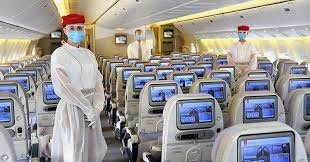 wearing full PPE: masks, gloves and gowns. What’s more, carriers contend that less congestion and fewer mob scenes currently allow for ‘less frictional’ back-to-front cabin boarding.
wearing full PPE: masks, gloves and gowns. What’s more, carriers contend that less congestion and fewer mob scenes currently allow for ‘less frictional’ back-to-front cabin boarding.
All well and good, but the September 30 expiration of any CARES’-style mandates may find that many airline executives will immediately seek to restore the lucrative marketing/operational models of 2019. For burning through $10b per month, flying one-half to two-thirds full with rock bottom fares, empty middle seats and six-foot distancing in 11.5-foot wide cabins are not the clearest path back to profitability.
In months to come, smaller airport/route stipulations and worker protections are bound to be jettisoned as hobbled airlines will re-seize control over where and how they fly. United has already made clear that it intends to lay off over 36,000 workers in September’s wake. That could also mean attempting to pack planes again, limiting route service and/or jacking up fares—even if that prices out many of the travelers they are currently struggling to win back. But if they don’t have travel customers, does it matter what the fare may be?
Feeling Frisky and Risky?
If so, better to take advantage of this airfare ‘windfall’ before carriers seek a cure for even more summertime blues, mindful of balancing tempting fares with personal care. Better yet to consider issues such as the following before we do: For one, how some airlines eschew fare refunds due to flight/ reservation cancellation for tightly windowed rebooking credits, particularly when original bookings are made well in advance. Moreover, will the major U.S. carriers’ recent move to abolish their onerous change fees will be permanent or simply fly-by-night?
Beyond that, let’s picture arriving at the airport complex, app-generated ticket and boarding pass in hand, prepared for touchless curbside check-in. We’ll wonder whether the disinfected and sanitizing wipe downs,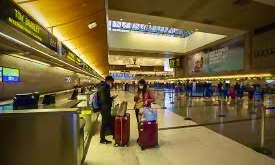 if not those robot floor scrubbers are really making these half-empty terminals and vendor facilities safely clean. Then we follow software paced, socially distanced security lines, aware we’re being tracked via cellphone locating.
if not those robot floor scrubbers are really making these half-empty terminals and vendor facilities safely clean. Then we follow software paced, socially distanced security lines, aware we’re being tracked via cellphone locating.
Pre-Check cleared or not, we will presumably find more expedited TSA screening through security tunnels with AI-infrared temperature scans and facial recognition (whither personal privacy?). Yet must we still remove all our liquids and devices? Furthermore will blood draws and sani-sprays—anything short of nasal cavity swab tests, really make it safe enough to board?
Being greeted at jetways’ end with crews and flight attendants in HAZMAT suits, we may well be temperature scanned again. Once aboard, we’ll want assurance that the cabin has been thoroughly deep-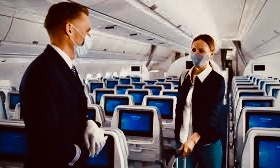 cleaned and fog sanitized immediately prior to flight time, with air filtered, flow redirected and recirculating every 2-3 minutes. We must be satisfied that distanced seating and overhead carry-on bins are properly maintained—even if we have to obsessively wipe them down ourselves.
cleaned and fog sanitized immediately prior to flight time, with air filtered, flow redirected and recirculating every 2-3 minutes. We must be satisfied that distanced seating and overhead carry-on bins are properly maintained—even if we have to obsessively wipe them down ourselves.
This is what air travel has come to in a time of COVIDation. On the other hand who exactly is accounting for all these COVIDraconian measures? Clearly not the current FAA, which clings feebly to it “advisory” role and sideline recommendations, failing to assert full authority over laying down truly enforceable rules governing spacing, (A/L)-mandated masks, sanitizing and PPE gear. Indeed, the entire D.O.T. under Sen. Mitch McConnell’s heiress wife, Elaine Chao has been virtually MIA throughout this pandemic siege. And shifting Center for Disease Control guidelines carry only so much weight in the stormy travel marketplace.
The latest flap involves White House Coronavirus Task Force’s blocking of a CDC draft order requiring all passengers and employees to wear masks on all public and commercial transportation (planes, trains, buses and airports, stations and depots) in the U.S. to curb COVID transmission. The task force counters that such federal ‘quarantine powers’ rules should be left to individual states and municipalities, depending upon local pandemic impact: good luck patching all that together…
Bottom line: these standards and mandates are essentially between us travelers and the airline industry. Which incidentally can’t wait to middle finger the middle seat and shed all the CARES’ “flight plans to failure” shackles (namely, UAL and A/A), throttling up toward a Q3 rebound and 2019-like new ‘normalcy’ even the carriers themselves (and Boeing) fear is a COVID-19 vaccine and several years away.
Vamigration: Toward a Truer Escape Hatch…
Thus we travelers look to be in the captain’s chair these days. Point is, how inclined are we to take once again to the skies? Granted uncertainty abounds: not least fears of in-cabin, close-quarters proximity with possibly infected/carrier passengers, social distancing or no. Given the threat of COVID-19’s atmospheric/ aerosol transmission, how trustworthy are airlines’ efforts and assurances of maintaining germ-free inflight environments anyway?
Despite being aware they can ill afford to be the cause of coronaviral spread, can carriers genuinely keep infected passengers from boarding their planes? Especially since UAL has been social media skewered over videos revealing its recent fully packed flights, and American’s plans to regularly 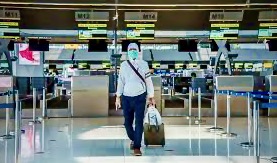 resume some chockablock flights soon as well.
resume some chockablock flights soon as well.
Moreover, human and health rights concerns shadow the emergence of all the security technology, from GPS tracking to COVID scanning to facial recognition biometrics. Upon deplaning, for instance, we find longer, more complicated customs lines—not to mention the lengthy queues due to spreading 14-day arriver quarantines (Q’s for Q’s). Add to these the plague of ‘Novid’ travel insurance exclusion clauses—and that many cockpits are now crewed by rusty shutdown-idled pilots brought back up to speed mainly by/through simulator and/or Zoom session training.
Otherwise, on the ground and horizon are more rigorous safety protocols: namely Aussie-New Zealand ‘travel bubbles’, the EU and Euro-style ‘Tourist Corridors’ (minus visitors from Russia, Brazil and the U.S.: ‘Ugly Americans’ to ‘Bugly Americans’?). Add in border closings and ‘public health corridors’ clearly separating passengers from crew, cargo and ramp rats. Then come post-COVID antibody (herd, or just thinning the herd?) ‘Immunity Passports’ (however corruptible those may be). In the aggregate, they are all-or-nothing stop-gaps that only fail-safe testing and an eventual vaccine certificate will effectively address. This, as we face the spectre of a coronavirus advancing from first to second wave under a cloud of recurring flare-ups and outbreaks—even potential reinfections despite notional post-case antibody protections.
So this is ultimately about our tolerance of risk versus reward, about being less venture averse and more prepared budget-wise to reap the rewards of a ‘Newmal’ of COVID-era travel near and far. It’s called getting and going real in uncharted times, with dispersion and discernment top of mind: Safely threading the needle, missing the hot spots, making scents of COVID-sniffing airport dogs, enduring the minor humiliations airport security and concerns over personal data flexibility/privacy as ‘leisure’ travel slowly but surely resumes its steady climb. Such issues will be haggled over and dealt with long into the foreseeable future, not to mention nonstop (geo) political upheaval worldwide.
Revival of the Fittest.
Clearly the black swan turbulence in this resetting travel world demands rigorous, independent, confidence-building information/oversight, as airlines push to stoke demand, creating their proprietary promotional pictures of a safe, sure travel revival. Our docket: T/T industry accountability, government regulation, an over $1 trillion deficit on infrastructure spending, consumer rights/recourse regarding traveler safety, security, cost/benefit scaling, data privacy—and above all, personal health & wellness on the go. This is the very/fresh coverage, analysis and spirited commentary VamoScrutiny and powerful corresponding applications will soon provide.
After all, with shelter orders moldering into cabin fever, Zoom/Flix fatigue setting in, why continue to hole up puttering and muttering, fetally bingeing and cringing until the COVIDemic squall blows over? Let’s 86 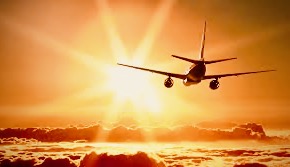 such wishful thinking, soar above the persistent pandemonia, opting not to vegetate but to Vamosmartly and safely escape the COVIDity coma in unswerving recovery mode. Because while there may be more procedural hoops to jump through, there’s so much to go out and do.
such wishful thinking, soar above the persistent pandemonia, opting not to vegetate but to Vamosmartly and safely escape the COVIDity coma in unswerving recovery mode. Because while there may be more procedural hoops to jump through, there’s so much to go out and do.
Course corrected: That’s the ticket—a well balanced ticket, at that. When in doubt just hit the road, or gear up and wing it. For whatever the current spikes and surges, weather and worries, Vamosays let’s get intrepidly out there—we’ll be catch’n you all along the way. So Vamble on…(MMTC…)
